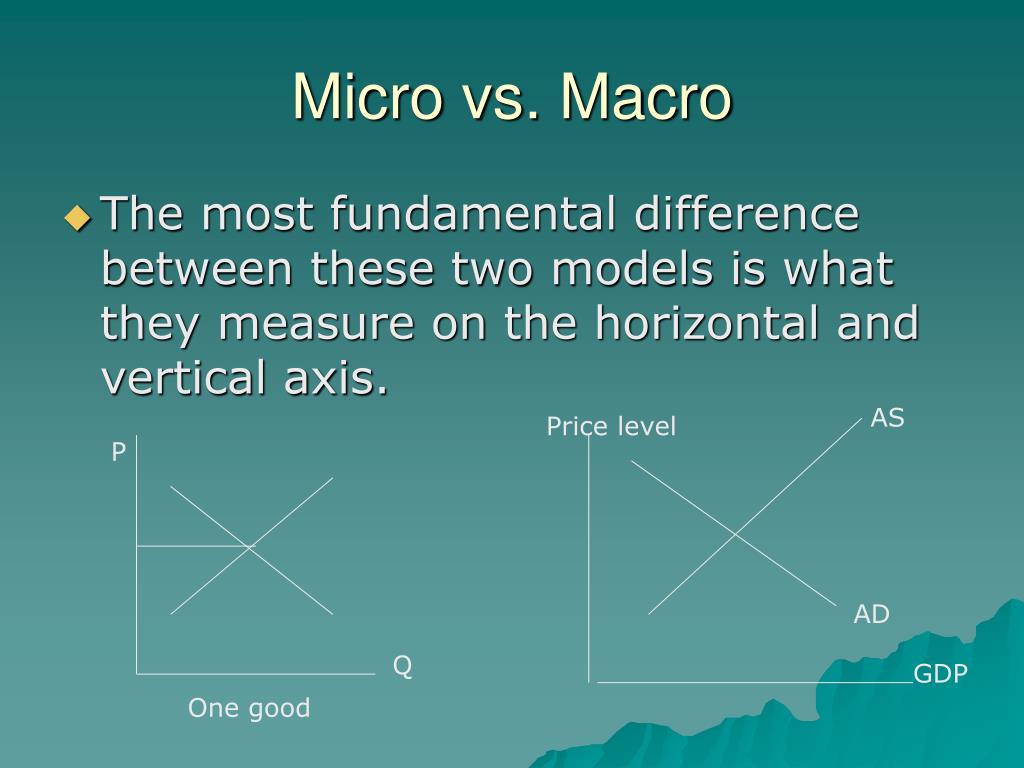

As we know, changes and processes in the economy are a result of both small and large-scale elements which retain the capacity to affect each other or are directly affected by each other. Such a study will help in the formulation of economic policies and programs. All microeconomic studies can analyze the better understanding of micro and macroeconomics variables. A close connection exists between the two terms. microeconomic and macroeconomics are not interrelated but are mutually exclusive. How do Microeconomics and Macroeconomics Interdependent on Each Other? The different components of macroeconomics include:

What are the Different Components of Macroeconomics? Reasons that affect varying economic growths among countries.Īnother feature of macroeconomics is that it focuses on aggregated growth and its economic correlation. Reasons that are likely to influence unemployment and inflation.įiscal policies are likely to influence factors like interest rates.Įffect of globalization and international trade. The overall economic growth of a country. Macroeconomics follows a top-down approach, and involves strategies like – It also includes the study of policies and other influencing factors that affect the economy as a whole. Macroeconomics studies the economic progress and steps taken by a nation. Market-specific labor markets ( For example demand labor wage determination in specific markets). Producers are driven by individual preferences. Market demand and supply (For example Textile)Ĭonsumer Behavior ( for example Consumer Choice Theory)

The different components of microeconomics include: What are the Different Components of Microeconomics? It takes a bottom-up approach to analyse the economy. One of the main features of microeconomics is it focuses on casual situations when a marketplace experiences certain changes in the existing conditions. Supply and demand for goods in different marketplaces.Ĭonsumer behaviour, as an individual or as a group.ĭemand for service and labour, including individual labour markets, demand, and determinants like the wage of an employee. Microeconomics covers several aspects, such as – Microeconomics focuses on the choices made by individual consumers as well as businesses concerning the fluctuating cost of goods and services in an economy. Read the article below to know more about the difference between Microeconomics and Macroeconomics with examples. It looks at the aggregate variables such as aggregate demand, national output, and inflation. On the other hand, macroeconomics is the study of the whole economy. It looks at the issues like consumer behavior, individual labor market, and theory of firms. Microeconomics is the study of specific segments and markets of an economy. Micro-Average & Macro-Average Recall Scores for Multi-class Classificationįor multi-class classification problems, micro-average recall scores can be defined as the sum of true positives for all the classes divided by the actual positives (and not the predicted positives).Economics is broadly divided into two different categories namely microeconomics and macroeconomics. The positive prediction is the sum of all true positives and false positives. Micro-Average & Macro-Average Precision Scores for Multi-class Classificationįor multi-class classification problems, micro-average precision scores can be defined as the sum of true positives for all the classes divided by all positive predictions. On the other hand, micro-average can be a useful measure when your dataset varies in size. You should not come up with any specific decision with this average.

The macro-average method can be used when you want to know how the system performs overall across the sets of data. The weighted macro-average is calculated by weighting the score of each class label by the number of true instances when calculating the average. Use a weighted macro-averaging score in case of class imbalances (different instances related to different class labels). Use macro-averaging score when all classes need to be treated equally to evaluate the classifier's overall performance concerning the most frequent class labels. Use micro-averaging score when there is a need to weigh each instance or prediction equally. When to use micro-averaging and macro-averaging scores? The macro-average F1-score is calculated as the arithmetic mean of individual classes’ F1-score. The macro-average precision and recall score is calculated as the arithmetic mean of individual classes’ precision and recall scores. The micro-average precision and recall score is calculated from the individual classes’ true positives (TPs), true negatives (TNs), false positives (FPs), and false negatives (FNs) of the model.


 0 kommentar(er)
0 kommentar(er)
